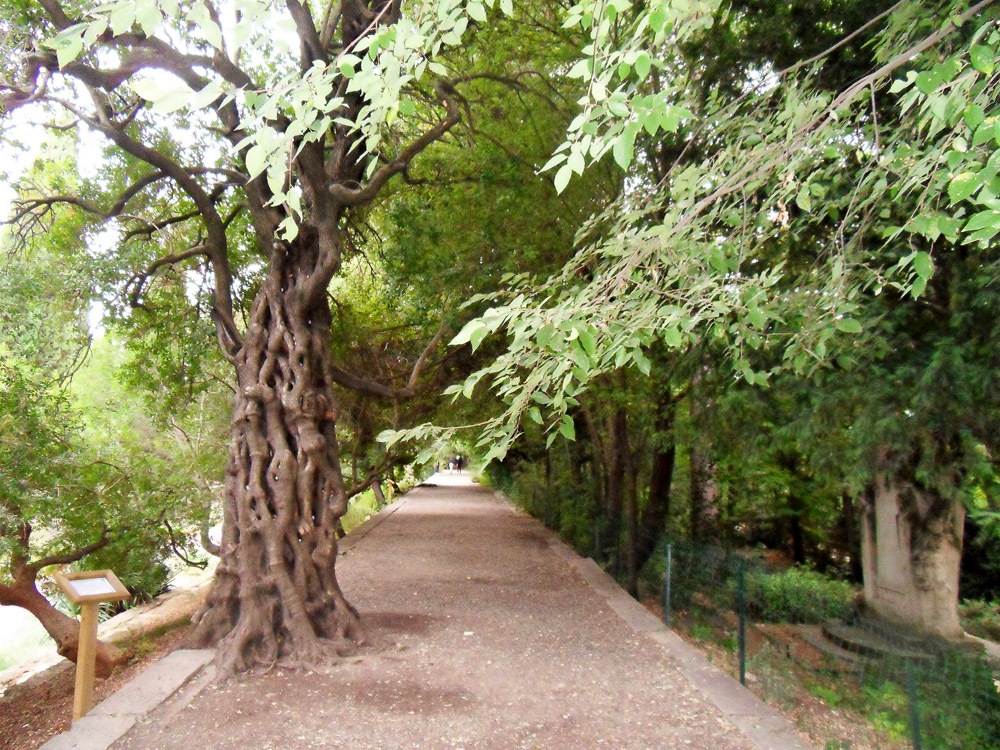Click on the images to enlarge them / Cliquez sur les images pour les agrandir
Wherever I travel at home and abroad I prioritise visiting the local botanic gardens. In September 2016 I was fortunate to visit the south coast of France and stay in the old city of Montpellier a few minutes’ walk from the Jardin des Plantes.
It is France’s oldest botanic garden, established in 1593 under the leadership of Pierre Richer de Belleval, professor of botany and anatomy at the University of Montpellier (established 1289). It is the second oldest in the world, inspired by the Orto Botanico di Padova, the very first university botanical garden established in 1545 in Padua, Italy, and in turn used as a model for the botanic garden in Paris which was established in 1626. The garden in Montpellier, as in Padua, was established and maintained by the Faculty of Medicine to provide resources for students studying plants used in traditional medicine and this led to the development of the scientific disciplines of botany, medicine and pharmacy.
Largely destroyed in 1622 during the siege of Montpellier, the garden was restored in 1629 and underwent further remodelling and expansion in the 19th century; the orangerie was completed in 1804, the arboretum landscaped in 1810 and the English garden with a Nelumbo pond and greenhouse dates from 1859.
On entering the 4.5 hectare garden Margaret Beard and I were disappointed to find that around half of it, including the orangerie, was fenced off with signs indicating that these areas were awaiting renovation. We were there at the end of a long, hot and very dry summer and the plants were in need of rain, better labelling and more loving care. However, as we wandered along the paths, past architectural ruins and through shaded avenues of venerable trees the garden began to weave its magic and it was rewarding to discover many new and some familiar Mediterranean climate plants. It was very clear that this important historic garden is desperately under resourced although there were a few sections of the garden which had been recently renewed.
The oldest tree in the garden is a Phillyrea latifolia in the family Oleacea, hence its common name of green olive tree. This specimen is over 400 years old and the deep fissures in its trunk have been used for centuries by visitors to deposit secrets, prayers and love letters. There is also a mature male Ginkgo biloba, planted from a cutting in 1795, and grafted with female branches in 1830 which later produced the first ever seeds in France.
The arboretum contains many other fine old trees including representatives of the genera acer, celtis, cupressus, maclura, quercus, and zelkova.
Twenty five of “les beaux arbres” in the garden were identified with information boards describing their characteristics and culture which we were able to roughly translate, greatly enhancing our appreciation of these ‘beautiful trees’. Montpellier has a climate and topography very similar to that of Adelaide, as noted by Sir Samuel Davenport, (founder of the olive oil industry in South Australia and member of the board of the Adelaide Botanic Garden) in his letters home during the 1840s. It is interesting to compare this ancient garden and its collections with our own new Garden of Health in the Adelaide Botanic Garden.
Text and photos: Merilyn Kuchel, South Australia MGS
![]()



